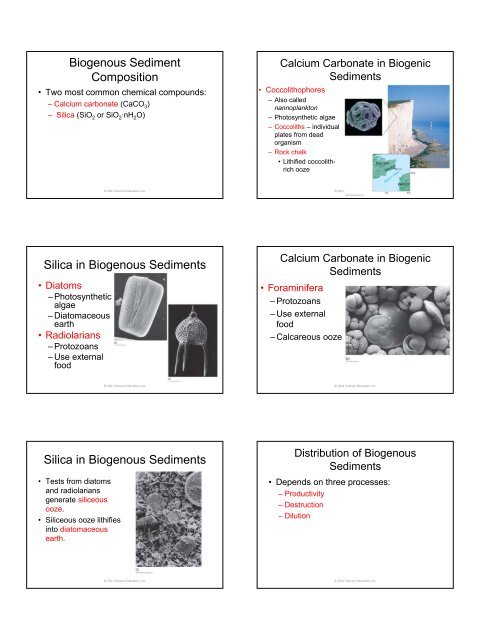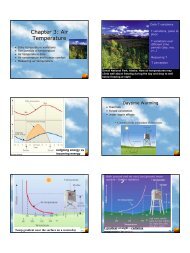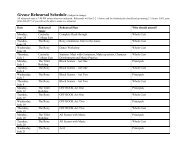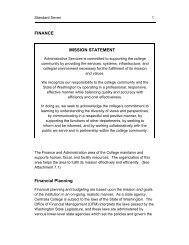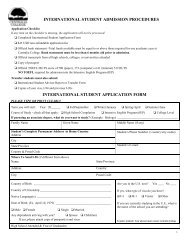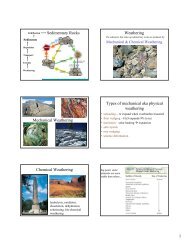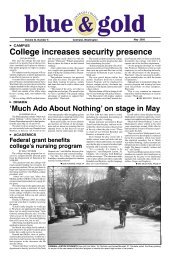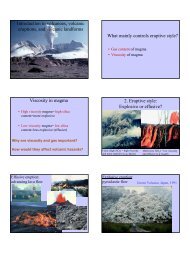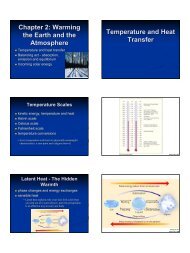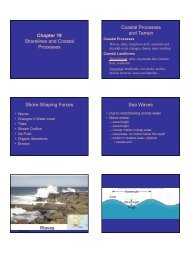Chapter Overview Marine Sediments Marine Sediment Classification
Chapter Overview Marine Sediments Marine Sediment Classification
Chapter Overview Marine Sediments Marine Sediment Classification
You also want an ePaper? Increase the reach of your titles
YUMPU automatically turns print PDFs into web optimized ePapers that Google loves.
Biogenous <strong>Sediment</strong>Composition• Two most common chemical compounds:– Calcium carbonate (CaCO 3 )– Silica (SiO 2 or SiO 2·nH 2 O)Calcium Carbonate in Biogenic<strong><strong>Sediment</strong>s</strong>• Coccolithophores– Also callednannoplankton– Photosynthetic algae– Coccoliths – individualplates from deadorganism– Rock chalk• Lithified coccolithrichooze© 2011 Pearson Education, Inc.© 2011 Pearson Education, Inc.Silica in Biogenous <strong><strong>Sediment</strong>s</strong>•Diatoms– Photosyntheticalgae– Diatomaceousearth• Radiolarians– Protozoans– Use externalfoodCalcium Carbonate in Biogenic<strong><strong>Sediment</strong>s</strong>• Foraminifera– Protozoans– Use externalfood– Calcareous ooze© 2011 Pearson Education, Inc.© 2011 Pearson Education, Inc.Silica in Biogenous <strong><strong>Sediment</strong>s</strong>• Tests from diatomsand radiolariansgenerate siliceousooze.• Siliceous ooze lithifiesinto diatomaceousearth.Distribution of Biogenous<strong><strong>Sediment</strong>s</strong>• Depends on three processes:– Productivity– Destruction– Dilution© 2011 Pearson Education, Inc.© 2011 Pearson Education, Inc.


